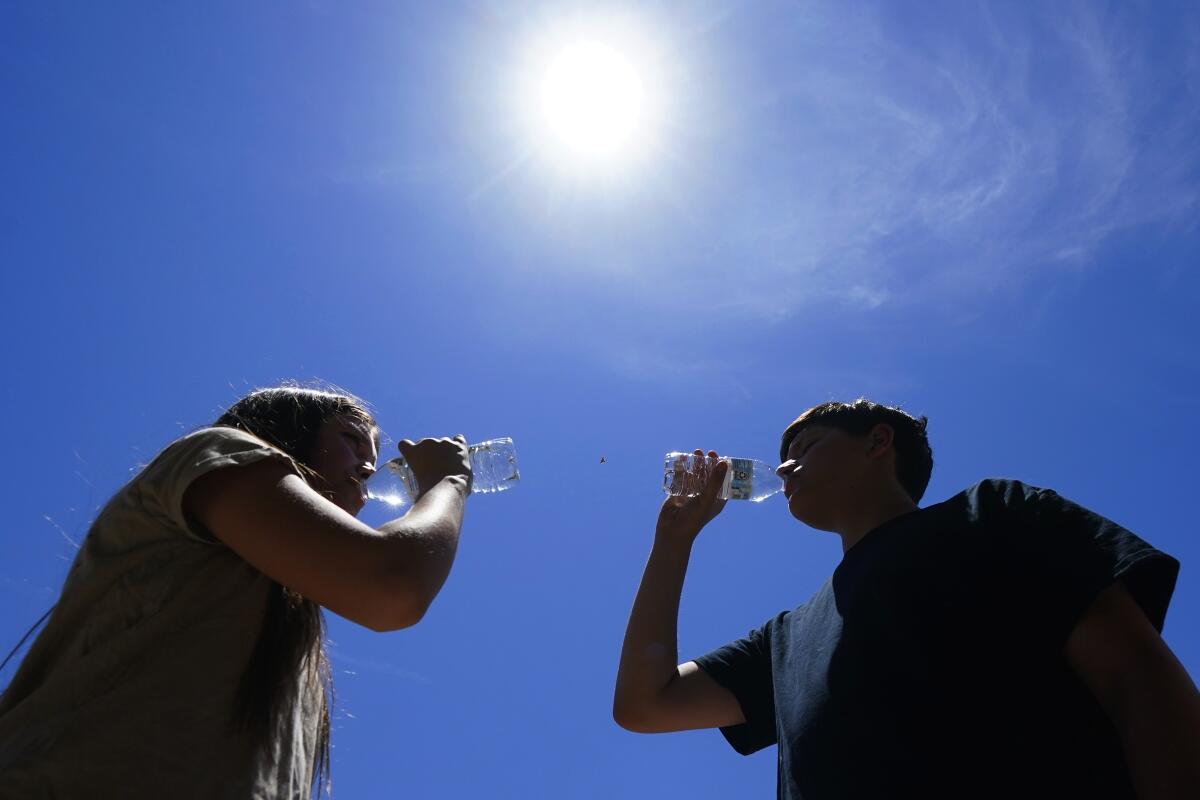An end to Phoenix’s historic heat wave may finally be in sight

PHOENIX — A historic heat wave continues to stifle Phoenix — but the end may finally be in sight for residents of Arizona’s largest city.
The National Weather Service is forecasting a high of 107 degrees Monday and 102 on Tuesday.
“I hate to say, ‘Yes, this will be the last,’ but it’s more than likely that will be the case — this will be our last stretch of 110s this summer,” said Chris Kuhlman of the National Weather Service in Phoenix.
An excessive heat warning was set to expire at 8 p.m. Sunday.
Meteorologists said Phoenix had reached 112 degrees by early afternoon Sunday, which eclipsed the previous record of 111 for the date, set in 1990.
It also marked the 55th day this year that the official reading at Phoenix Sky Harbor Airport reached at least 110 degrees. The city broke the previous record of 53 days — set in 2020 — when the mercury hit 114 degrees Saturday.
No major U.S. city is more dependent on air conditioning than Phoenix. It’s less a matter of comfort than survival.
Phoenix experienced the hottest three months since record-keeping began in 1895, including the hottest July and the second-hottest August. The daily average temperature of 97 degrees in June, July and August passed the previous record of 96.7 set three years ago.
The average daily temperature was 102.7 degrees in July, National Weather Service meteorologist Matt Salerno said, and the daily average in August was 98.8. In July, Phoenix also set a record with a 31-day streak of highs at or above 110 degrees. The previous record of 18 straight days was set in 1974.
The sweltering summer of 2023 has seen a historic heat wave stretching from Texas across New Mexico and Arizona and into the California desert.
Worldwide, last month was the hottest August ever recorded, according to the World Meteorological Organization. It was also the second-hottest month measured, behind only July 2023.
Scientists blame human-caused climate change with an extra push from a natural El Niño, which is a temporary warming of parts of the Pacific Ocean that changes weather around the globe.
More to Read
Sign up for Essential California
The most important California stories and recommendations in your inbox every morning.
You may occasionally receive promotional content from the Los Angeles Times.










